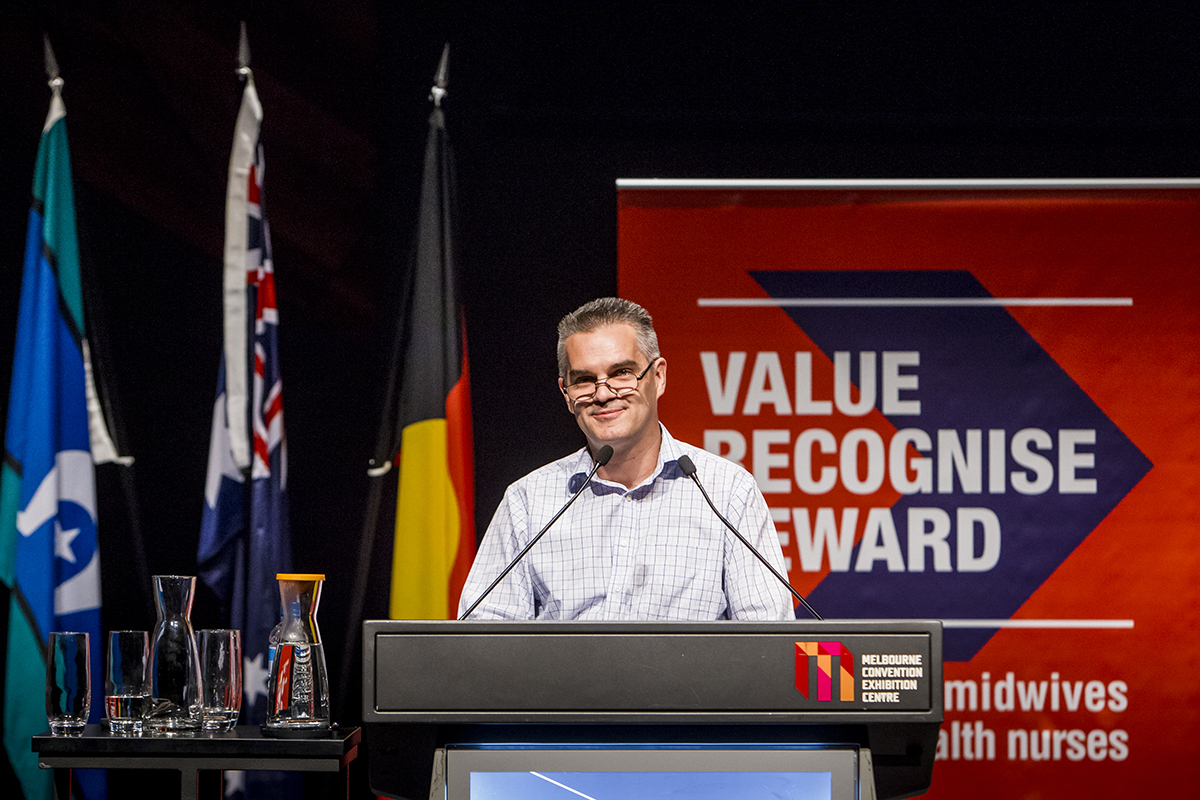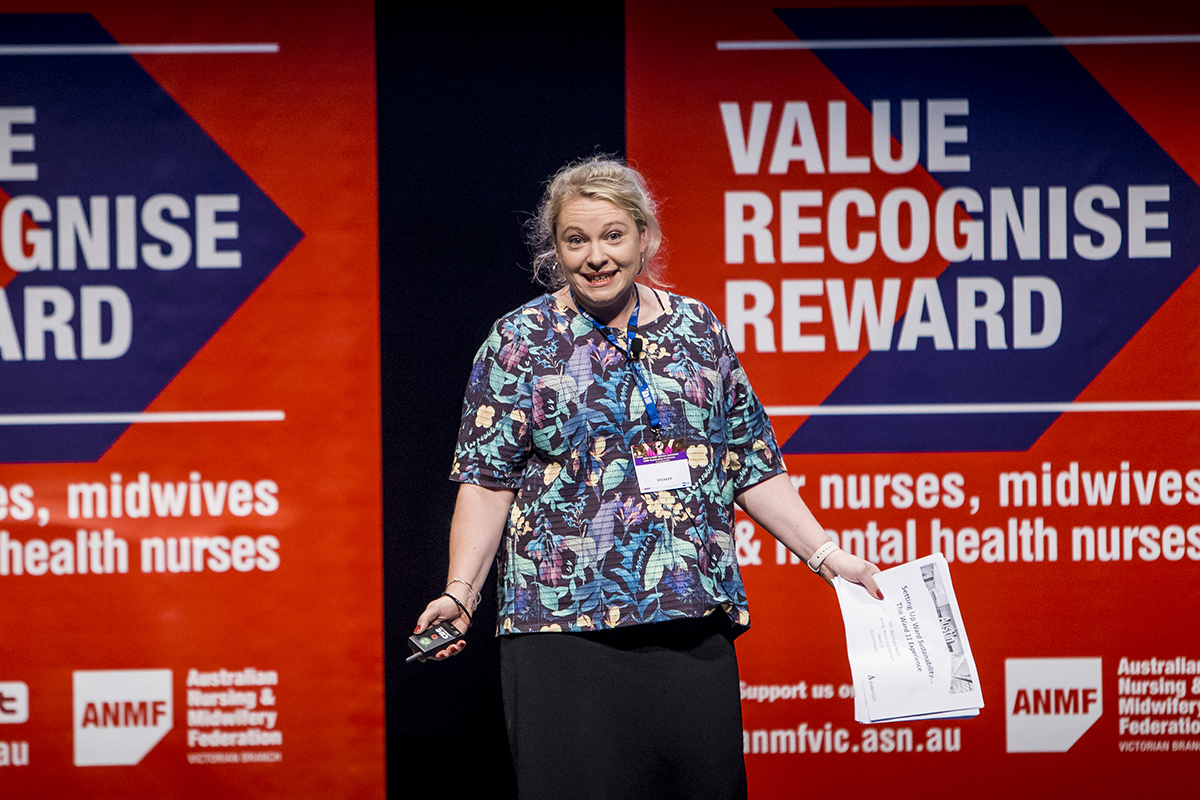
Victoria McKenzie-McHarg, Australian Conservation Foundation. Photograph by Angela Wylie
Environmental campaigners are keen to work with the health sector to drive action towards a clean energy transformation, the climate campaign manager from the Australian Conservation Foundation said.
Victoria McKenzie-McHarg spoke to the Health and Environmental Sustainability Conference attendees about how environmental campaigners saw the need to change strategy when the carbon price was scrapped after the last election. Communities wanted action on climate change but were overridden by the lobbying of big, wealthy polluters.
In the lead-up to last year’s Paris talks on climate change, there was a need to bring the community together ‘stronger, bigger, broader and deeper than ever before’ in the form of the People’s Climate March. She said the health sector and ANMF was already driving environmental action that nurses and midwives could get involved in, including the Healthy Futures campaign to lobby superannuation companies to divest from fossil fuels.
‘Our priorities are about building momentum towards a clean energy transformation in this country and that’s going to need a really comprehensive approach to so many parts of our lives. It’s absolutely about replacing dirty polluting fuels and replacing them with clean energy and also getting serious about energy efficiency,’ she said.
Tracie Lund, Coordinator of the Morwell Neighbourhood House, told the conference that the Hazelwood Mine Fire in 2014 had galvanized the Latrobe Valley community to take charge of their future beyond coal-generated power. Ms Lund, who was a community witness at the Hazelwood Mine Fire Inquiry, told the audience that Morwell was already disadvantaged when the Hazelwood Mine Fire occurred in February 2014, burning for 45 days and sending plumes of acrid smoke and ash into the Latrobe Valley, including Morwell.
Into this environment of disadvantage came the fire and the resulting health impacts, including nose-bleeds, respiratory infections and likely, as yet unknown, long-term impacts. The Hazelwood Mine Fire Inquiry found that a spike in deaths in the Latrobe Valley between February and June 2014 were likely to have been caused by the fire.
Ms Lund said the failures of agencies to communicate with and engage the community around the mine fire were well documented by the Hazelwood Mine Fire Inquiry. But there had been an unexpected outcome – the community had stood up to be counted.
‘Until the mine fire in 2014, the plight of the Latrobe Valley was largely ignored by the state and in fact the country. The mine fire started a relentless battle to bring awareness of the industrial and health disaster that was unfolding,’ Ms Lund said.
Morwell residents took to the streets in protest, attended rallies and spoke to the media. An independent candidate ran for the seat of Morwell in the 2014 Victorian election – the government was put on notice.
Ms Lund said that recently Premier Daniel Andrews had announced an $18 million funding package for the Latrobe Valley which would establish a health zone to improve health outcomes, create a regional strategy to rehabilitate the region’s three coalmines, and update regulations governing coalmines.
‘There is a big push to level the playing field between industry needs and community needs and to map out a future for the Latrobe Valley before the world dictates when it is finished with coal. ‘For the first time the community has had an opportunity to discuss the impacts the power industry has had on our lives and to discuss important global concerns that are arising and the impacts that these are having on us locally.’
Ms Lund said that recently Premier Daniel Andrews had announced an $18 million funding package for the Latrobe Valley which would establish a health zone to improve health outcomes, create a regional strategy to rehabilitate the region’s three coalmines, and update regulations governing coalmines.
The community now had a greater engagement in its future and sought to be involved in government and industry discussions about diversifying the power industry and other issues affecting the Latrobe Valley.




